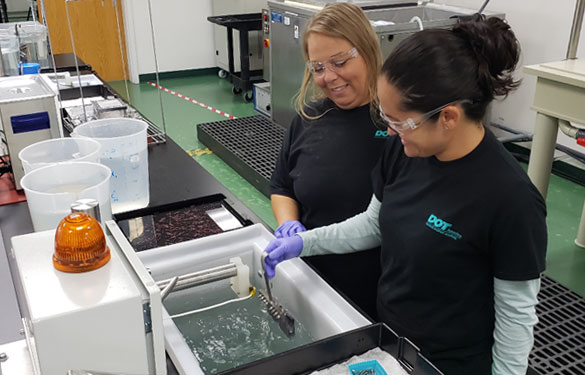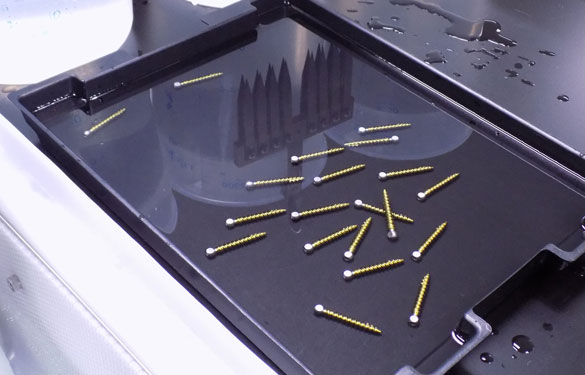Type III Color Anodizing
Precise modification of the naturally occurring titanium oxide layer to create thin film interference coloration of devices.
Technology
Improves ease of use through color identification of component sizes and mating pieces
The titanium type III anodizing process is an electrochemical process conducted in an aqueous electrolyte, such as phosphoric acid. During the process the implant performs as the anode, and at its surface water molecules undergo hydrolysis into hydrogen and oxygen. The oxygen is driven by the electrical potential to the titanium surface where it forms additional titanium oxide on the scale of angstroms.
The titanium oxide film is clear, allowing light to reflect off its surface, while some light passes through to the substrate reflecting and refracting out of phase. The difference in these light waves is perceived as color; hence, no dyes or additives are required.
With pre-treatment and precise control techniques, color shades including brown, purple, blue, gold, pink, and green are possible with this process.
The titanium oxide film is clear, allowing light to reflect off its surface, while some light passes through to the substrate reflecting and refracting out of phase. The difference in these light waves is perceived as color; hence, no dyes or additives are required.
With pre-treatment and precise control techniques, color shades including brown, purple, blue, gold, pink, and green are possible with this process.
The anodizing type III coating is an extension of the naturally occurring oxide layer (20-200nm). Titanium anodizing is primarily used in the medical device industry for aesthetics and ease of identification of devices.
Sample devices with a strong history of anodize III utilization:
- Bone screws
- Plates
- Dental implants and abutments



Improving implant performance through titanium anodizing
Proven implant coating since 1998.
Anodized surfaces for trauma, spinal fusion, joint replacement and dental components
Anodized surfaces for trauma, spinal fusion, joint replacement and dental components
Customized Surface Processing:
DOT will partner with your R&D team to develop customized surface designs for your specific device application.
